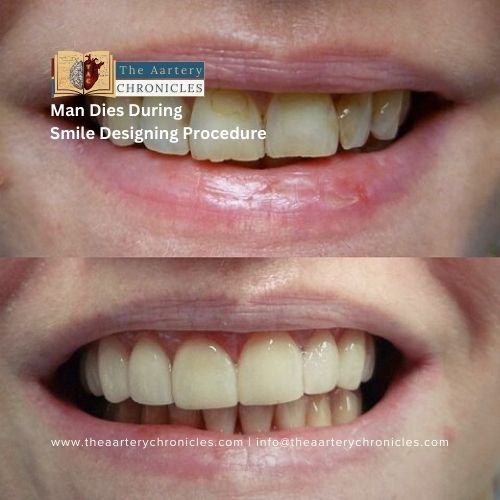

Dental Veneers for a Radiant Smile
Oftentimes, we are mesmerized by the flawless features of our favourite celebrities on screen, but we frequently forget that these actors and superstars are also people with all the imperfections that come with being human. One such defining characteristic shared by all Bollywood and Hollywood celebrities is their million-dollar smile, which contributes to their alluring on-screen appeal. Attaining that radiant, bright smile, however, requires the expertise and assistance of dental professionals and that’s where cosmetic dentistry comes into play.
Dental veneers are among the most popular cosmetic dentistry treatment options, as they help enhance one’s smile by fixing a variety of aesthetic and functional concerns with your teeth.
What are Dental Veneers?
Dental veneers, also known as laminate veneers, are custom-made coverings that resemble tooth-coloured shells and are fitted over the front surface of the teeth. [1] Dental veneers have been a popular conservative treatment method for restoring and enhancing the aesthetics and imperfections of anterior teeth. [2]
What are the Benefits of Dental Veneers?
The primary advantage of dental veneers is to create a radiant, confident smile by concealing cosmetic dental concerns. Dental veneers are mostly used to fix cosmetic dental concerns, like: [3]
- Discolored teeth: Dental veneers help in fixing stained and discoloured teeth, which may occur due to a variety of factors like tetracycline staining, fluorosis, amelogenesis imperfecta and ageing.
- Fractured and worn teeth: Dental veneers are useful in improving the appearance of fractured, chipped, cracked, or worn teeth.
- Abnormal tooth morphology: Dental veneers help by altering the length, shape and, size of the teeth.
- Correction of minor malposition: Dental veneers help camouflage minor gaps between the teeth and even out irregular teeth.

What is the Procedure of Dental Veneer Placement on Teeth?
Veneers are generally placed over the front teeth rather than the molars and posterior teeth. The procedure of dental veneer placement involves reshaping the tooth by removing a small portion of tooth enamel and taking an impression of the particular tooth, which is then sent to the dental labs for fabrication of dental veneers. It usually takes one to two weeks for the fabrication of veneers, after which a follow-up appointment is scheduled with the patient, wherein the laminate veneer is bonded to the tooth surface using adhesive techniques that involve the use of an acidic etchant and luting dental cement.
The reshaped tooth is conditioned with an acidic etchant to roughen the tooth surface, which makes the tooth surface favourable for the bonding of veneers, and then the veneer is bonded to the tooth surface with the help of adhesive luting cement. [2]
What are the Different Types of Dental Veneers?
Because of their translucency and ability to be employed in thin layers, porcelain and ceramic are the two types of dental materials that are most frequently used to make veneers [2]. Some of the different types of dental veneers include the following:
Porcelain veneers: Porcelain is one of the most common choices for veneers because:
▪ It addresses a wide variety of cosmetic dental concerns.
▪ Are biocompatible with no adverse effects on gingival health.
▪ Are a relatively conservative means for restoring the aesthetic of anterior teeth.
▪ Have lower failure rates.
▪ Offer higher patient satisfaction rates. [2]
Composite veneers: Composite veneers are made of composite resin, which is a mix of organic and inorganic materials and is used to aid in mild cosmetic dental issues. [2]
No-prep veneers: No-prep veneers are a minimally invasive veneer alternative as they require less enamel removal than a traditional porcelain veneer during tooth preparation. [1]
Removable veneers: Removable veneers, also known as snap-on veneers, are removable as compared to traditional porcelain veneers, which are permanent. [1]
What are the Risks & Side Effects of Dental Veneers?
Like any other dental procedure, dental veneers also come with certain risks and side effects that include: [1]
- Tooth sensitivity: The tooth may develop sensitivity to hot and cold temperatures.
- Irreversible: Most types of veneers are permanent and can’t be reversed.
- Tooth damage: Since most dental veneers require shaving some portion of enamel to make the tooth veneer accommodative, the underlying dentin may suffer due to enamel removal.
- Expensive: Since dental veneers are an elective treatment, they are not covered by most insurance companies.
Summary:
▪ Veneers are custom-made coverings that resemble tooth-coloured shells and are fitted over the front surface of the teeth.
▪ A veneer is a cosmetic dental procedure that aids in restoring and enhancing the aesthetics and imperfections of the anterior teeth.
▪ Different types of veneers include porcelain veneers, ceramic veneers, no-prep veneers, and removable veneers.
▪ Most types of veneers are permanent.
▪ Some of the common risks and side effects associated with dental veneers include tooth sensitivity and tooth damage.

Dr. Anjali Singh, BDS [KGMC, Lucknow]
- Medicine
- Nutrition And Diet
Lorem ipsum dolor sit amet, consectetur adipiscing elit. Ut elit tellus, luctus nec ullamcorper mattis, pulvinar dapibus leo.












